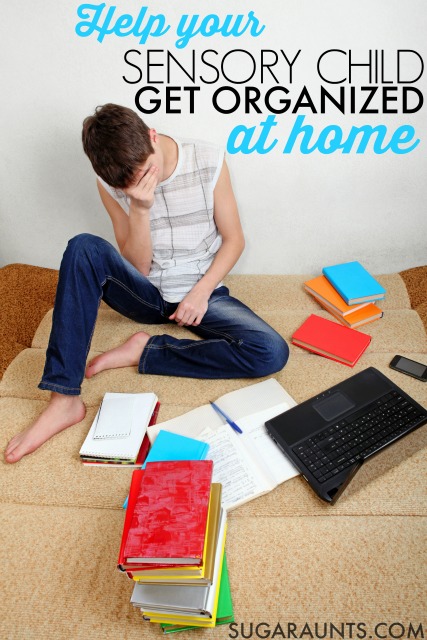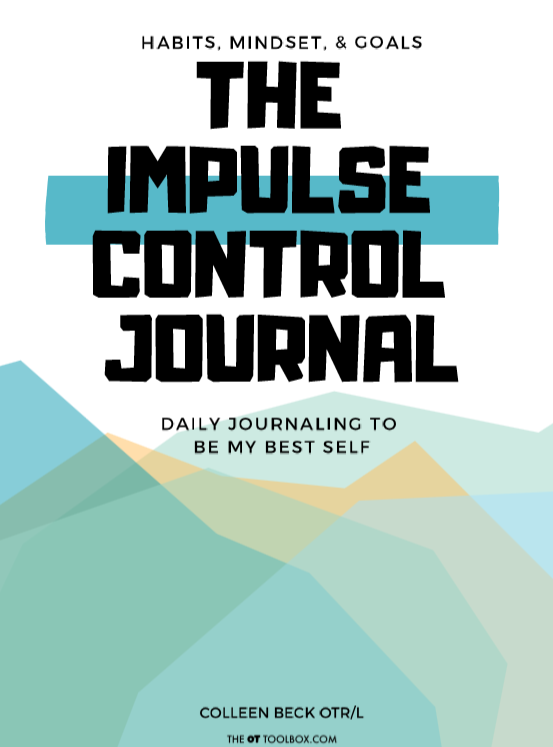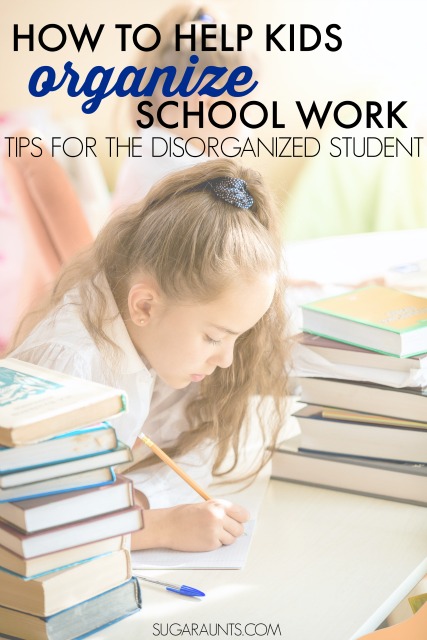Do you know a student that struggles to organize homework? Maybe you see a messy backpack and homework that is always lost. Here we are covering tips and strategies to address disorganized students so homework can get done, important papers aren’t lost, and kids can thrive in learning. Let’s cover some important organization tips.
Today, I’ve got ideas and tips to help children with attention, executive functioning, focus, sensory, or learning difficulties get organized at home.
This is part of our Real Tips for Helping Your Sensory Child Get Organized series and a follow up to our post on Helping Sensory Kids Get Organized at School.
Tips to organize homework
Imagine a world where your body and brain are unsure of what’s happening next. Imagine a world where your body and brain are unsure of what’s happening now. There are noises coming at you from near and far, itchy socks scratching your toes, and a commanding urge to jump, fall, swing, and roll.
Now, imagine that you have to recuperate from a high-sensory day at school, full of bells, school buses, students voices, chalkboards, crowded hallways, single-file lines, and laborious writing tasks.
You now have to get off the school bus and fall into the evening home routine. There are homework duties, schedules, dinner time patterns, bedtime tasks, and settling down. The time at home is full of “Must-Get-Done” items that sometimes make the family time that is so precious more of a crazed 3 hours of “Non-Stop-Rushing”.
The child with sensory needs often times have attention, behavior, visual perceptual, fine motor, and executive functioning problems. Then there are the issues of fidgeting, distractibility, motor planning concerns, problem solving issues, and memory difficult. All of these problem areas are a tornado of trouble when it comes to organization at home.
When students pile off of the school bus or jump in the car in the school pick-up line (or even finish up their homeschool day), there is often times a sense of busyness and rushing. It’s a race to get home, homework done, dinner prepared, eaten, and cleaned up, before it’s time to hurry off to appointments and activities.
We are a busy society and it’s almost normal to fill our hours with things to do. Those commitments bring with them lists, dates, facts, and more commitments. We are focusing on so many things at one that brains are on constant overload.
And our kids are right there, feeling the burden of overwhelm. For the child with sensory processing disorders or kids with learning difficulties, it’s a strain.
Tips for Disorganized Homework and Backpacks
Full disclosure: This post contains affiliate links.
For children with organization difficulties, it can be hard to stay in the moment of focus needed for the steps to just get started on their after school requirements. “Do your homework” is a multiple step process that is overwhelming for disorganized kids to break down into small and manageable steps. Kids with sensory issues often have executive functioning difficulties.
Executive functioning is the ability to plan, organize, and initiate a task while using working memory, impulse control, and self-monitoring. It’s needed to manage and complete to-do lists. It’s seeing the bigger picture of a project and taking the first step toward getting tasks like homework done.
When these concerns are combined with other co-existing troubles like distractibility, behaviors, and fidgeting; the steps of pulling homework folders from the backpack, sorting papers and removing what is not needed, sitting down to focus on several homework assignments, and work through the tasks is difficult. Then there is the putting away and focusing on other items on the after-school list.
Getting started on homework can be a daily battle. Then, once the initial task of starting on homework has been negotiated, there are the flexibility issues that a sensory child has. Adapting to changes in situations like a homework assignments can further overwhelm the child with sensory concerns.
Parents of children with these difficulties tend to over manage homework and after school tasks. The needs of the child to get started on homework steps prevents them from prioritizing and planning the steps, and as parents, we get into a routine of micromanaging the process.
The overwhelmed child needs a parent’s guidance in organizing the steps of a task, but sometimes it is helpful to teach the child to build skills to improve organization.
Organizing Homework and Working Memory
Furthering after school organizational difficulties are deficits in working memory. Working Memory is the ability to hold information in our brain while wing or retrieving other information to complete a task.
It is this mental juggling that allows us to multi-task and think through the steps of an assignment while simultaneously completing it. This is a very difficult task for children with sensory needs.
Working Memory is taking home the homework tracker, packing the backpack with the correct books, arranging items in the homework folder, and recalling homework assignments.
Does any of this sound familiar to you? There are ways to help the child who is so overwhelmed by after school tasks, that they break down. There are ways to build organization skills, adapt to problem areas, and to manage prioritization. Try some of these tips for helping with the after school chaos:
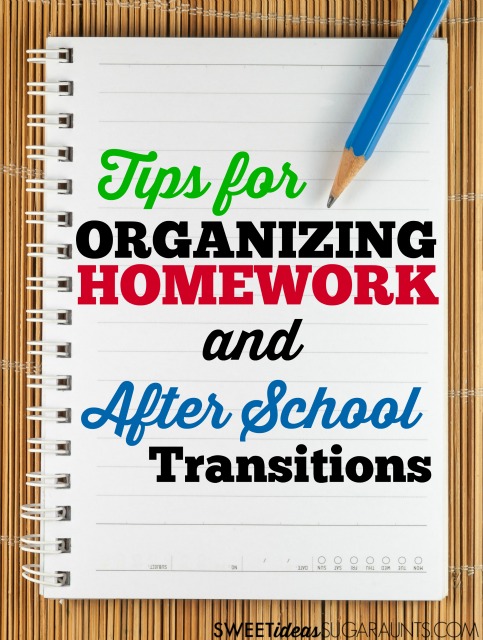
Tips to help kids get organized with homework and after school tasks
- Create an after-school Chill Out Zone. The school day is overwhelming and a sensory place to self-organize is a great way to re-charge.
- Provide movement options like jumping, running, bouncing, and swinging. A mini trampoline
(affiliate link) is a great addition to the home.
- Create an after-school plan. It should include post-school day calm down time, snack, homework time with scheduled brain breaks, and built in time to transition from homework to dinner and after-dinner activities.
- Stick to a homework start time. Keep it consistent every day.
- Create a homework location without distractions. Consider a tri-fold poster board
(affiliate link) if your homework space is in a high-traffic area like a kitchen.
- Provide an uncluttered space away from toys or media.
- Create a reward system for completing the chart. This might be something like a preferred activity.
- Use a timer during homework tasks for movement breaks.
- Provide fidgets toys during homework. We made a homework fidget bag that can be used everyday.
- Schedule an active task after homework.
- Provide one homework folder for all classes instead of several.
- Modify tasks if handwriting is a difficult area for the child.
- Break down assignments into smaller parts.
- Use a single plastic bin
(affiliate link) to hold all required items for homework: pencils, pencil sharpener, crayons, ruler, erasers, etc.
- Provide bins for school items. The backpack and any needed items like the backpack, school shoes, equipment, hats, and gloves can be placed in the bin and are at easy access for the next morning.
- Use a homework checklist.
Homework Checklist
A homework checklist is a good way to offer an after-school routine for ensuring homework is organized, the backpack is cleaned out, and important papers are addressed.
A homework checklist can be presented in list format where the student checks off each item as it is completed. Other versions can be a visual schedule. Other children might benefit from a picture schedule.
One suggestion is to place the checklist in a clear sheet protector and use a dry erase marker to check items off each day. At the end of the day, wipe the clear sheet protector clean so it is ready for the next day’s homework. (affiliate links)
Create a reward system for completing the chart. This might be something like a preferred activity.
Here are some important steps that can be added to a homework checklist:
- Take out planner or folder from the backpack.
- Check for all materials.
- Remove unneeded papers.
- Make a list of homework assignments.
- Start working.
- Check work.
- Put homework back into planner or homework folder.
- Get Mom or Dad’s signature on homework tracker.
- Put planner and books back into backpack.
- Put the backpack in a location where it’s always placed.
Organized homework and transitions
Often times, kids have other activities or sports after school. It can be easy to get distracted after coming home and forgetting all about the homework. Being rushed doesn’t help with keeping homework organized.
Transitions are often an area of difficulty for kids with executive functioning challenges, sensory processing differences, or learning disabilities. The inflexibility and inability to initiate tasks interfere with the flow from homework to other functional tasks.
A child with different needs will often times need outside cues to comprehend transitions.
Try a few of these ideas to help with organizing kids in the after-school and home time before bed time:
- Create evening schedules that include dinner prep times and eating times. Include tasks that the child completes like helping to set the table and cleaning up after dinner.
- Create an organization center with white boards for after school commitments like appointments and activities.
- Create bedtime routine checklists or picture schedules.
- Provide a calm-down time before bed at a consistent time every day. Encourage winding down with a darkened room and low lights.
These organization tips might not work for every child that is disorganized. Some kids might benefit from some of these organization tips and not others. These ideas and tools will take time.
It is important to build a structure that becomes part of the daily routine in your home.
Be sure to stop by and see tips for Helping Sensory Kids Get Organized at School to help your sensory child get organized at school. These tips will help your child with the after school organization transitions, too.
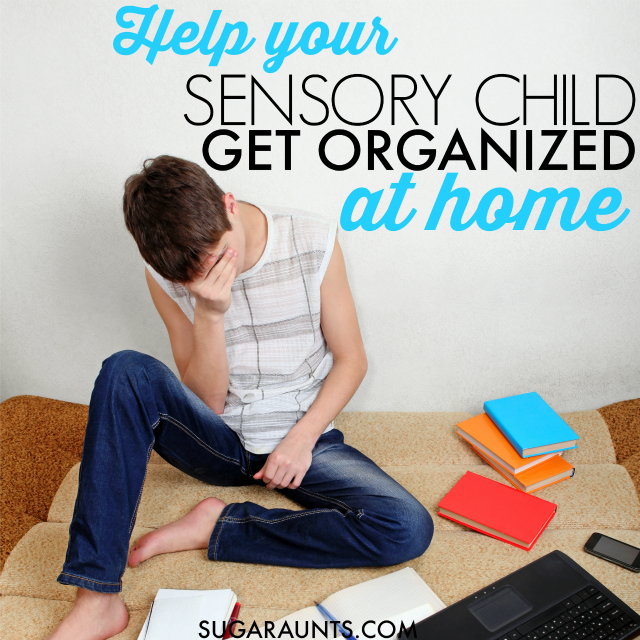
The Impulse Control Journal…a printable resource for helping kids strategize executive functioning skill development. When saying “calm down” just isn’t enough…
When a child is easily “triggered” and seems to melt down at any sign of loud noises or excitement…
When you need help or a starting point to teach kids self-regulation strategies…
When you are struggling to motivate or redirect a child without causing a meltdown…
When you’re struggling to help kids explore their emotions, develop self-regulation and coping skills, manage and reflect on their emotions, identify their emotions, and more as they grow…
Grab the Impulse Control Journal to build organizational strategies, planning, prioritization, habits, and mindset in kids.


